af Magazine
~The Asahi Glass Foundation’s web magazine on the global environment~


Microplastics are Impacting Our Planet; We Need to Re-consider the Life Cycle of Plastics and Use Them More Wisely
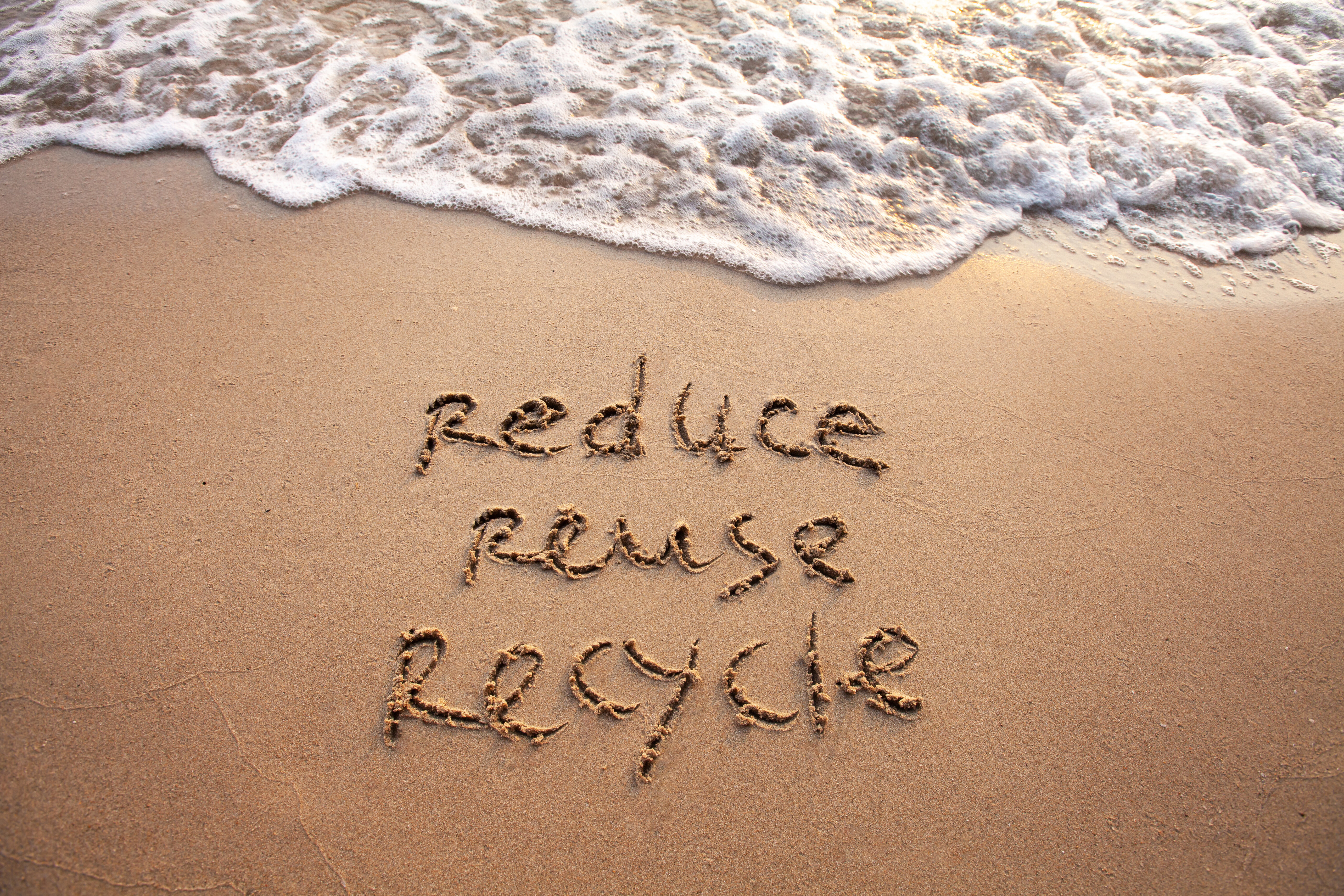
The group of British scientists who were awarded the 2023 Blue Planet Prize has revealed that plastics flow into the sea, break down into small particles known as microplastics, and can cause significant harm in the marine environment. This article, based on an interview conducted in May 2023 and their lecture during their visit to Japan in October 2023, presents the current understanding of the issue of microplastics and what we should do in the future.
Microplastics sneaking into the body
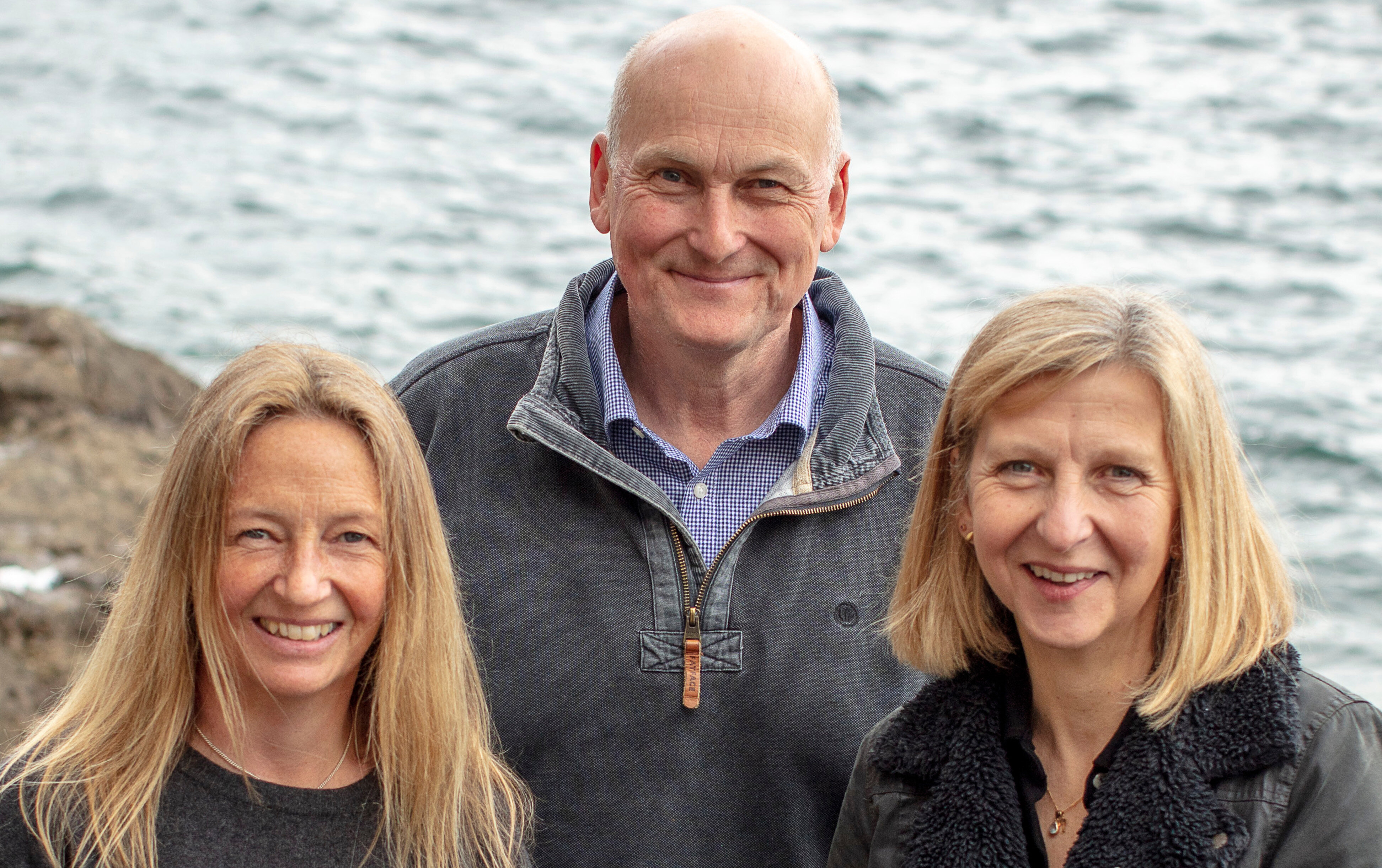
Marine plastic pollution is a global issue that has gained increasing recognition in recent years. Plastic waste flows into the sea through rivers and directly from the land and accumulates in the marine environment, where it hardly decomposes. Richard Thompson, a professor and the director of the Marine Institute at the University of Plymouth in the UK, was the first scientist to discover that microscopic plastic fragments had accumulated in the oceans over decades, and he described these pieces as microplastics.
Professor Thompson first became aware of microplastics in the 1990s. He was conducting experiments in the marine environment at the time, and he would go to the beach every day to collect the plastic waste that had accumulated there. One day, during a large-scale beach cleanup with a group of volunteers, he noticed something.
"There were many small plastic particles on the beach, left uncollected. Of course, they were not counted as garbage at that time. I felt that these small plastics, which were treated as if they were nothing, might actually be a big problem. For the next 10 years, I continued to collect and analyze these small plastics with my students, focusing on them specifically," said Professor Thompson.
Professor Thompson and his team's 2004 paper, titled 'Lost at Sea: Where Is All the Plastic?', was the first to inform the world of the existence of marine microplastics. This paper generated a great deal of interest, and microplastics surveys began to be conducted around the world. As a result, we have gradually gained a better understanding of where and how microplastics exist. And the reality far exceeded Thompson's expectations.
"We found that microplastics are accumulating not only on beaches near cities, but also in the deep sea where humans have never visited before, and at an altitude of 8,400 meters near the summit of Mount Everest, and in Arctic Sea ice. I was very surprised by the concentration of microplastics in Arctic Sea ice, which was higher than in urban areas with high populations. In addition, we showed that microplastics are not only present in the environment, but also present in the bodies of fish and other organisms," said Professor Thompson.
What are the dangers of microplastics? It could accumulate in the body and cause functional disorders.
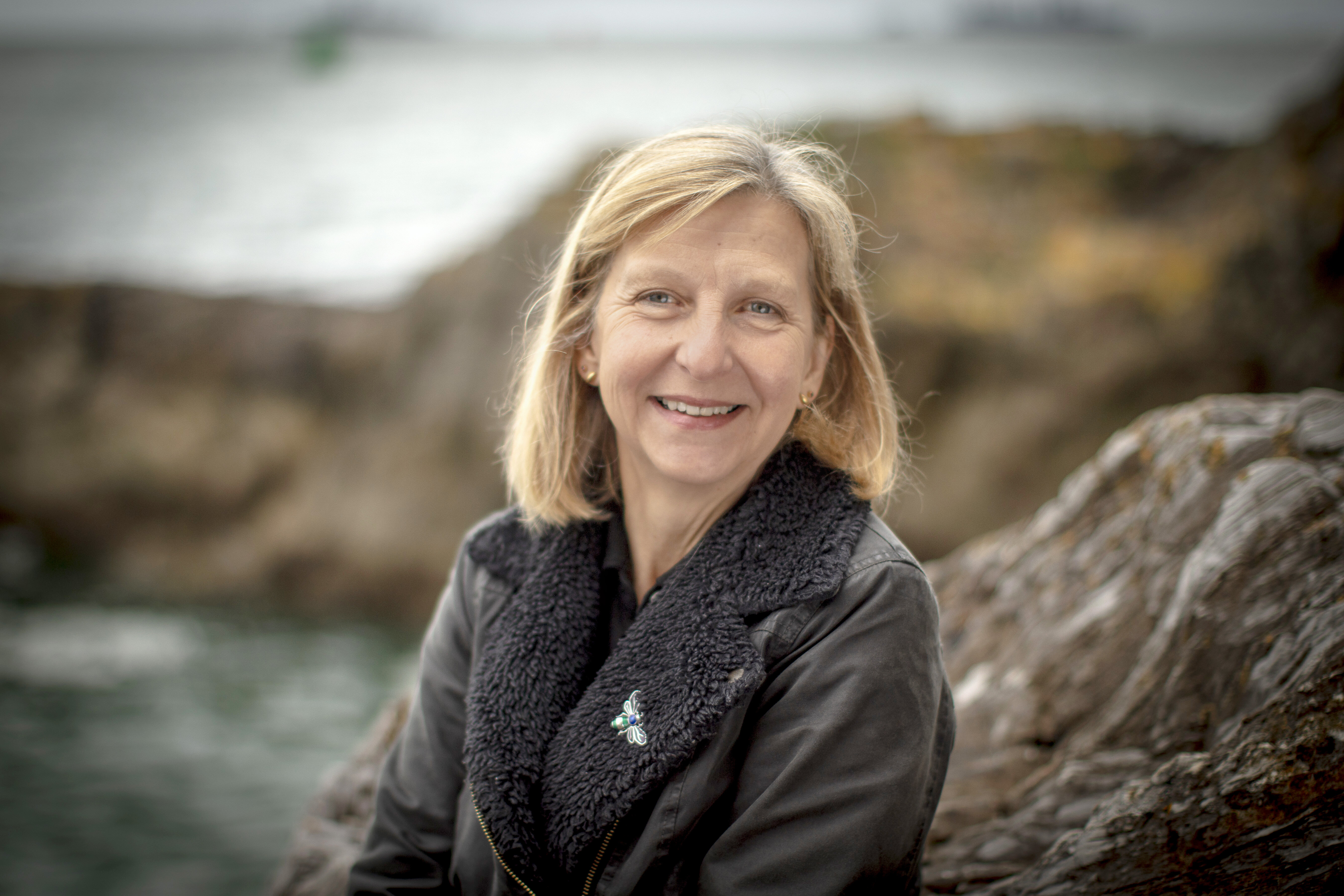
Among the group of three scientists, Professor Tamara Galloway of the University of Exeter in the UK has been researching the effects of microplastics on living organisms. She states, "Microplastics have the potential to cause harm due to the physical presence of the plastic polymer particles and through the release of chemical additives or absorbed contaminants from the environment into the body. Uptake of microplastics through ingestion with food or water or from breathing in microfibers from contaminated air can lead to damage to tissues and cells or alterations to the gut microbiome. Smaller microplastics can pass across the gut lining allowing the particles to enter body organs where they can cause inflammatory reactions and interfere with cellular processes."
"The amount of plastic that is actually accumulated in the human body is not yet fully known. Human biomonitoring studies have shown that a high proportion of people excrete microplastics in their stool and 100% of the population have at least one plastic additive chemical in their body, revealing that contamination is widespread. Laboratory studies have shown that animals can easily ingest microplastic, and that smaller microplastics are absorbed into blood cells and circulate throughout the body. In an experiment using marine mussels, microplastics were detected in the body for more than 48 days. If the mussel is eaten during that time, then the microplastics in their bodies will also enter the food chain," explained Professor Galloway.
Professor Galloway also conducted experiments cultivating marine worms (polychaetes) in environments contaminated with microplastics. As a result, the marine worms showed reduced food consumption, slower passage of food through their intestines, and inflammatory reactions in their blood cells.
"Microplastics are complex contaminants. Plastic materials often contain various chemicals added for functions such as UV protection and antimicrobial properties. In the marine worm experiments, we measured the levels of a phthalate ester plasticizer that was released from the microplastics into the bodies of the marine worms. This substance has the potential to affect hormones and the immune system, adversely affecting the ability of animals to grow and reproduce. This has the potential to seriously impact the marine ecosystem," said Professor Galloway.
Plastic is not evil. The problem is that we have not thought about what happens after we use it.
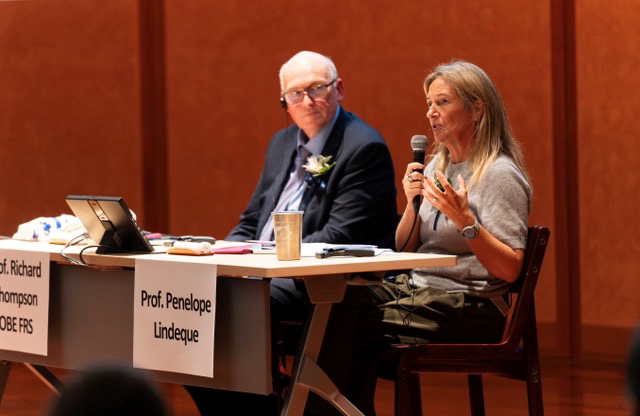
So, how should we deal with plastic? Professor Thompson says, "Plastic is a convenient, easy-to-use, and affordable material that offer numerous societal benefits. Plastic itself should be considered a valuable resource." Professor Thompson and his colleagues believe that the root of the problem is that we have not adequately considered at the design and production stage what will happen to plastic after we have finished using it. We need to do so before launching products onto the market.
Professor Thompson says, "Microplastics on the micrometer scale, can infiltrate living organisms. Some of these microplastics, which are called microbeads, were included in cosmetics and detergents as exfoliators or to improve cleaning performance. One of my doctoral students found that a single bottle of a cosmetic contained 3 million microplastics. Microbeads used in facial washing are washed away and can flow into the ocean. Once they enter the ocean, they are virtually impossible to recover and continue to persist there."
Professor Thompson's research, as presented in the paper, was brought up in the UK Parliament, leading to the momentum for the ban on the use of microbeads in other countries. However, Professor Thompson emphasizes, "The patents for microbeads were filed 50 years before our research. Did no one at that time ever wonder where these tiny plastic particles would end up? They could have prevented the release of millions of tons of plastic into the environment before it happened. I believe that instead of discovering and addressing the issue after it has occurred, the industry and scientists should collaborate to help prevent issues like this before they become a problem."
In fact, in the textile industry, for example, it is possible to create clothing designs that release fewer plastic fibers - this has been demonstrated in our own experiments. Instead of ignoring the release of microplastics, how can we reduce the amount that is released? Or can we switch to materials that have less impact on the environment? Professor Thompson and his colleagues believe that producing with a long-term perspective and minimizing the generation of microplastics from the outset is one of the answers to solving the microplastic problem.
Circular economy is one solution, but reducing production and consumption is the first priority.
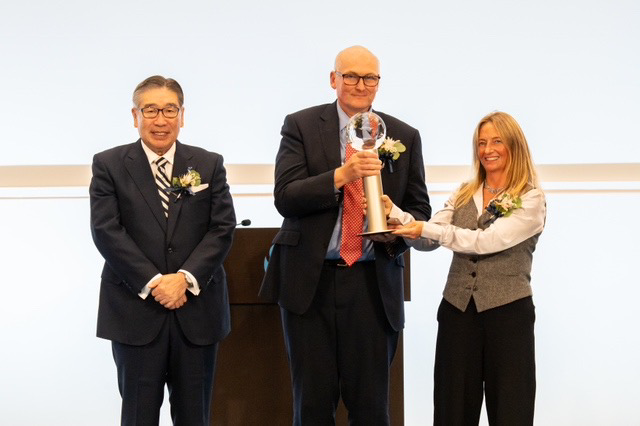
Professor Penelope Lindeque of the Plymouth Marine Laboratory is a molecular marine biologist. Her research centers on the bioavailability* and impact of microplastics and other anthropogenic pollutants on marine organisms, ecological processes, and estuarine and coastal ecosystems, with a focus on the impact of microplastics on zooplankton, which are small yet ecologically significant marine organisms.
(* the fraction of a substance that is absorbed into the bloodstream and can be used by the body)
"We have focused on copepods because these zooplankton play a crucial role in the marine food web, passing energy from plants, the phytoplankton, to higher trophic levels such as commercially important fish and other large animals such as whales in the food chain. As a result of our research, we found that copepods ingest microplastics, leading to a decline in energy reserves and a lower reproductive output. In other words, microplastics can directly impact animal populations and communities. Furthermore, we have also discovered that ingested microplastics, depending on their chemical properties, can act as endocrine disruptors and also affect molting," explains Professor Lindeque.
While continuing her research on microplastics in the marine environment and their impact on a wide range of animals from zooplankton to marine mammals, Professor Lindeque has collaborated with researchers from various fields and explored multiple approaches to address the issue, from working with remote sensing to detect plastic from space, to working with socioecomomists to calculate the social cost of plastic. One of these approaches is a method of removing microplastics from water using mussels, which has shown to be effective in experimental results. Professor Lindeque emphasizes that while the recovery of microplastics using mussels can help clean up the ocean and prevent further accumulation, the top priority is to stop the generation of microplastics."
Professor Lindeque says, "To prevent the generation of microplastics, we need to look at a whole range of solutions, including working towards a circular economy. In a linear economy, a large amount of plastic is discarded after use. We believe that we should promote technological innovation that takes into account the entire life cycle of plastic products from the design stage to end of life, with the intention of decreasing our reliance on fossil fuels and prolonging the lifetime of products."
In recent years, the term 'circular economy' has become increasingly common in Japan. However, there is a reality that people tend to focus solely on how to transform used plastic containers and bottles into something new after use, while overlooking the broader concept.
"Plastic is a material that degrades extremely slowly and both contains and readily absorbs pollutants, making it difficult to recycle. We should consider the following order: first reduce the amount of plastic we produce and use, then reuse, repair and finally recycle," says Professor Lindeque.
Professor Lindeque continued, "Plastic recycling also emits carbon dioxide and requires energy for waste management systems, so recycling is not a top priority. We need strategies to prevent leakage into the environment, reduce production and consumption, and support reuse, repair, and repurposing. Recycling should be seen as a last resort to decrease waste generation and pressure on waste management systems. We also hope to encourage designers and use robust scientific evidence to help guide development for the next generation of innovative plastics that are environmentally safe, non-toxic and not reliant on fossil fuels. And from the consumer's perspective, I would like to add the R for "refuse" to the 3Rs. By refusing unnecessary packaging and not buying unnecessary things, we can make a difference."
Currently, 180 nations of the United Nations Environment Assembly agreed to work towards an international plastic pollution treaty with legally binding obligations to reduce plastic pollution. The issue of marine plastic pollution is one that cannot be solved by a single country alone, so a framework that transcends national borders is being established. The three professors are all hopeful that this global plastic treaty will be a turning point for society.
Finally, Professor Thompson concluded with the following words: "We need to ensure all plastic products and packaging are designed with careful consideration for their -disposal. I believe such a future is possible - the choice, and the future of our Blue Planet, is ours. Now that the world is aware of the dangers of microplastics, there are things we can do. We can design and use more plastic wisely. By seeking not just economic efficiency, but considering the wider costs for the environment and humanity, we can resolve the issue of plastic pollution."
Profile
Professor Richard Thompson OBE FRS, Professor Tamara Galloway OBE, and Professor Penelope Lindeque
One of the two 2023 Blue Planet Prize recipientsProfessor Richard Thompson, Professor Tamara Galloway, and Professor Penelope Lindeque demonstrated the existence of microplastics in the ocean, and have since charted their presence from the deep Ocean to the highest mountains. They revealed microplastics are ingested by zooplankton and other marine species and have made major advances in understanding the effects of microplastics on these marine organisms and ecological processes. They have influenced global legislation and action, calling on the international community to develop solutions that will help to address the growing problem of plastic pollution in the Ocean.

